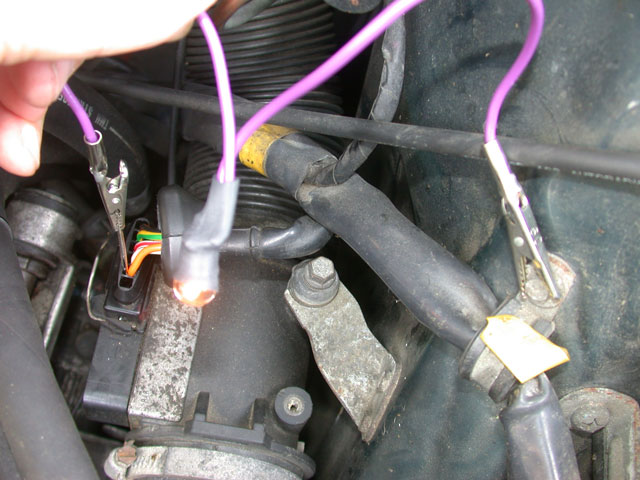|
The ignition switch is a small-screwdriver and mirror adventure, and deserves a bit more diagnostic before removing and replacing it. Yes, the connector just pulls off, meaning toward the firewall, and that exposes the two slotted screws retaining the switch to the lock.
Let's go over those warning lamps again. You say only CEL, Service, and Upshift lamps are on in test mode KP-II. The alternator D+ terminal provides the "ground" return through diodes in the instrument cluster for the Battery, Parking Brake, Brake Failure, and Bulb Integrity warning lamps, but the Oil Pressure and SRS lamps have independent grounds.
Because you're getting 12V at the power stage even during cranking, it could be the warning lamp symptom is not part of the reason there's no spark.
You're right on the readings at the power stage and coil, but the "ignition control switching function" or EZK or ICU output is that fluctuating voltage at pin 5, which is pretty hard to trust using a digital multimeter while cranking. The ICU gets power from two sources, one battery and one ignition switched battery. The battery source is through that 25A fuse on the fender. A good check of that circuit is to see 12V at the orange wire into the AMM with key on.

This test verifies the 25A fuse circuit (and all its potential for corrosion) passes current under the full load of the engine management electronics and fuel pumps. I'm guessing your car has LH3.1 fuel control.
--
Art Benstein near Baltimore
https://cleanflametrap.com/ign_sw.html
|